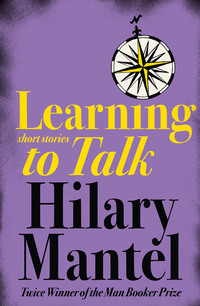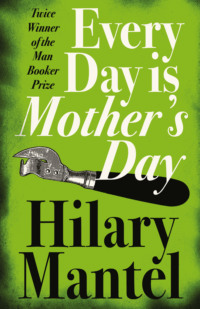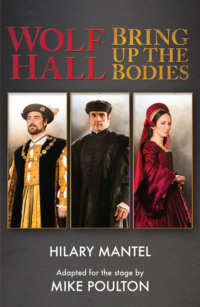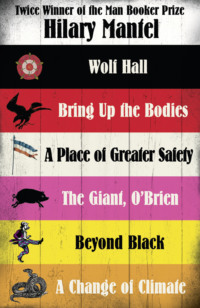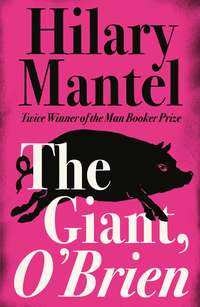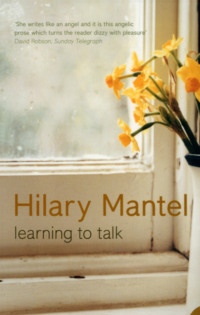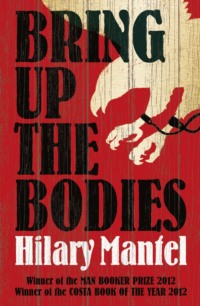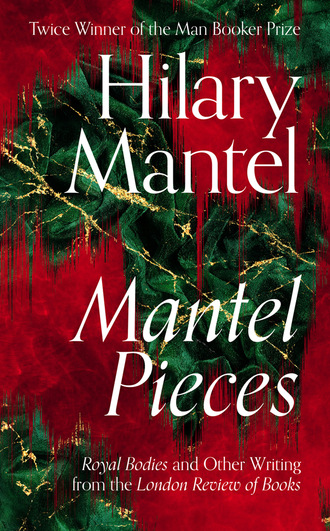
Полная версия
Mantel Pieces
Elisabeth Roudinesco (a pupil of Lacan and a historian of psychoanalysis) is concerned not just with Théroigne’s life history but with revolutionary feminism; with Théroigne’s madness and what it means, and with how historians have treated this baffling and intriguing woman. Her book is intelligent, original and deeply felt, but it is written, or perhaps translated, in a strained and artificial idiom which makes Théroigne’s story sound even more bizarre than it really is. Throughout the book, errors and inconsistencies pass without editorial intervention; the index is waste paper. But however badly you tell Théroigne’s story, you cannot take away its fascination. The cowherd became an opera singer. The opera singer became a rabble-rouser. The rabble-rouser became a madwoman. It is inevitable that the poor, starved body on the postmortem table should have become a battleground for theorists. No doubt it is useless to complain that the subject’s humanity has slipped away. Even her contemporaries were quick to turn Théroigne into a symbol.
Théroigne had a daughter; we do not know her date of birth or the name of her father, but we know that she died in 1788. Théroigne also contracted syphilis. In the light of her later illness one would like to hear more about this, but perhaps it is as well that we don’t hear more from this author; it is impossible, for several reasons, that a surgeon should have told Théroigne that ‘the virus had entered her bone marrow.’ Medical matters are not Roudinesco’s strong point; it is only in legend that the murdered Marat was still bleeding on the day of his funeral.
Théroigne was restless and ambitious; she wanted to make a professional career as a musician, so she left her old marquis and went in pursuit of success. She crops up in London, Naples, Genoa, Rome; we can follow her, just about, by a paper trail of pawn tickets and letters and legal agreements. In the spring of 1789 she took lodgings in Versailles, and attended every day the debates of the newly convened Assembly.
On the eve of the revolution, women did not regard themselves as an interest group. Throughout the century poor women had taken to the streets in times of shortages and high prices. But few people in 1789 thought that women should be allowed to vote – or indeed, that all men should be allowed to vote. Suffrage was dependent on economic status, and few women had enough of that. Besides, as Roudinesco shows, few Enlightenment thinkers could conceive of any role for women beyond the domestic. There were exceptions, like the Marquis de Condorcet, who believed that either no human beings had natural rights, or all had the same rights. But the biology-is-destiny school of thought had the upper hand: women were weak, irrational, subject to cyclical indisposition, unfitted by providence for any part in the political process. The Declaration of the Rights of Man did not extend to women; it was enough if their fathers and brothers and husbands had rights. Théroigne called this attitude ‘supremely unjust’.
At some stage Théroigne acquired not only the language of political discourse, but also the famous riding habit – white, black or blood red – in which she sweeps through the imagination of her contemporaries and of romantic historians; at some stage, this neglected, abused little girl puts on her plumed hat and picks up her pistols. What was she then – a feminist pioneer, a street-fighting woman? Any close account of her life is a process of debunking. Though she haunted the Palais-Royal in Paris, she was perhaps not present on 12 July, when the crowd turned into a mob; she was not present two days later, when the Bastille fell. She did not lead the women of Paris on their October march to Versailles, to bring back the royal family, ‘the baker, the baker’s wife, and the baker’s little apprentice’. What she did do was to make herself pleasant to various up-and-coming deputies and journalists, to attend little discussion groups; to be seen, once or twice, on the streets when notable events were occurring. Her greatest moment came when she delivered a speech to the men of the Cordeliers Club, and was enthusiastically applauded. But would the left-wing club make her a member? Ah, well: that was another matter.
Elisabeth Roudinesco has a number of interesting things to say about the nascent political power of women, but she tends to make simple ideas sound very complicated; Olwen Hufton, in her study of women and citizenship, is a model of clarity.[2] Hufton has produced a vigorous, well-argued, level-headed book, written with a nicely sardonic wit. She handles theoretical issues with ease, makes them concrete; Roudinesco makes them vaporous. Théroigne is peripheral to Hufton’s narrative; her interest is in more ordinary women, women who (by and large) have neither faces nor names, but who, as the revolution progressed, arrogated to themselves an increasing share of informal power. But did the revolution advance women’s rights, or retard them? Both these authors show how feminism and progressive politics came adrift from each other. Urban women rioters did not want the vote, but price controls on bread, candles, soap. Their interests and those of peasant women did not coincide. And rural women, as their men complained, clung to their priests: to their madonnas and village virgins, to the hope of a better life after this.
As Théroigne became better known, she became the target of a ruthless campaign in the royalist press. She had tried to keep herself to herself – Roudinesco, who presumes to go to bed with her subject, assures us that ‘it was not hard for Anne-Josèphe to renounce the pleasures of the flesh, for she had never known them.’ But inevitably, stories about her background leaked out. A certain deputy had the unfortunate surname of Populus. The satirical right-wing news-sheets nominated him as Théroigne’s lover, thus implying that she was mistress to the people, a very busy prostitute. She was depicted as having given birth in the chamber of the Assembly – her labour brought on by excitement at one of Robespierre’s speeches.
In the imagination of the era – and of later eras, too – a public man is one thing; a public woman quite another. A woman who leaves hearth and home for the wider world is a streetwalker. She is a locus of disease; she victimises men, infects them. A number of historians have described the revolution as a spreading infection, a disease running out of control. Roudinesco shows us the painful metaphorical weight the woman revolutionary had to bear. She tends, however, to write as if Théroigne had a harder time than her female contemporaries. In fact, sexual slur and innuendo was the established, pre-revolutionary weapon of anonymous but aristocratic pamphleteers, who portrayed Marie-Antoinette as a predatory lesbian. During the revolution, the journalist Hébert would portray the ferociously respectable Manon Roland as a slut, and Antoinette as a seducer of her own pre-adolescent son. Any woman who put her nose above the parapet received the same treatment. Right-wing journalists like Suleau, one of Théroigne’s persecutors, employed language offensive to a 20th-century ear. Did people in fact believe what was written in the press? Were they blind to satire and exaggeration and sheer silliness? Roudinesco writes as if the left-wing press of 1790 was quite different from the royalist press – as if it was sober and responsible, and employed legions of fact-checkers. But abuse was in the air. The press was free for the first time. The fine art of vituperation was flourishing, on every side. There was no divide between the personal and the political. Théroigne’s friend Camille Desmoulins once wrote a theatre review so ruinous to business that the leading man called him out.
The men who traded insults had means of settling their disputes: rapiers and writs. Théroigne had no platform from which to reply. Towards the end of 1790, heartsick and in debt, she left Paris. She wanted to see her family – she was always loyal to them, despite their treatment of her. Unfortunately, her reputation as a political activist followed her. Three émigré officers kidnapped her from a rural inn. One of them attempted to rape her. She was handed over to the Austrians, and imprisoned in the Tyrol, in the formidable fortress of Kufstein.
Her captors had swallowed her legend. They did not ill-treat her physically, but they put her under a great deal of mental pressure. They believed that she was on intimate terms with the men who were now shaping events in Paris. They had amassed a formidable amount of documentation about her – some of which has misled Elisabeth Roudinesco. But it soon became clear that while Théroigne was a singular and eloquent woman, a great enthusiast for revolution, her actual influence had been very limited; she had no particular knowledge of the inner workings of the Jacobin Club or of the private opinions of revolutionary leaders.
Théroigne coughed blood. A doctor said her mental state showed cause for concern. Her interrogators took her to Vienna, where she was taken to an interview with the emperor, who ordered her release. Escorted halfway across Europe by her captors, she resurfaced in Paris. Most people had assumed she was dead; besides, the world had changed.
In republican France, Théroigne would grow into her popular persona, go halfway to meet her violent legend. Did she, on the day the monarchy was overthrown, kill the journalist Suleau? Certainly, she was at the centre of a mob which did so. Roudinesco does not concern herself too much with sifting through the available accounts, and this seems a loss. So many of the revolution’s leaders remained aloof from the violence. It seems important that Théroigne did not.
At least there was no longer a royalist press to spread rumours about her private life. But she was further away than ever from real power. Manon Roland – who was disdainful of women’s role in public life – exercised covert power when her husband was minister of the interior. Pauline Léon and Claire Lacombe – mysterious, marginal women – seized the initiative in the political societies. By 1793, the women sansculottes were on the streets, calling for price controls. Théroigne did not fit in anywhere. Whatever she was, she was not a woman of the people: her superior if patchy education, her cosmopolitan experience, marked her out. She attached herself to the Brissotin faction in the Convention, to the people who were later called Girondins; she backed their pro-war policy, and campaigned for the right of women to bear arms.
It was not an astute move. Théroigne and other women campaigners invoked the image of the Amazon. Myths were well understood, in those days. As Roudinesco reminds us, the Amazons killed half their male children at birth, and kept the rest as emasculated slaves. It is hard to think of an image more calculated to strike panic into the male psyche. Théroigne campaigned among the women in Saint-Antoine, claiming that her views had the backing of prominent revolutionaries like Robespierre. But Robespierre had never met her, and said so. He was unlikely to favour her notion of women’s battalions, since he did not favour any battalions at all – he was opposed to the war. He had his own constituency among the women of Paris, who came to sit in the public gallery at the Jacobin Club and worship him. As Hufton says, a pattern had been established: on their day off, men went drinking and women went to church. The women of Paris may have had little time for the priests the old regime had foisted on them, but they preserved the image of a male saviour who was gentle, celibate and ready to die. They cherished at the same time, Roudinesco says, the image of Marat, but for a different reason. He was everything the political woman was said to be. He was ugly. He was irrational. He was a political embarrassment.
Théroigne’s opponents in the press were now on the left, not the right. They depicted her as wearing a false moustache, which tended to drop off at moments of crisis. Predictable male grumbles were beginning to surface. When a man got home from a hard day’s patriotism, he wanted his dinner on the table; he didn’t want to find that his wife was three streets away, attending a political rally. In the summer of 1793 the power of the women’s clubs would be broken. A series of personal and peculiar contingencies – which Hufton describes very clearly – identified them with the enragés, the anarchistic looters of grocer’s shops, the populists whose views, in time of war, became a luxury the republic could not afford.
Théroigne was not a clubbist, though, or an enragé’s mistress, or anything much any more, just a woman washed up on the revolution’s inhospitable shore; her vision of women’s role was becoming utopian, at a time when only the bleakest pragmatism could take one safely from day to day. In May 1793 she turned up at the door of the Convention to take her usual place in the galleries reserved for Girondin supporters. A crowd of women ambushed her, stripped off her clothes and whipped her. The incident was very violent; it was not a token humiliation. She was rescued by Marat, who called off the women, put an arm around her and took her to safety. It is one of the doctor’s few recorded good deeds.
The following spring, one of her brothers asked the authorities to take her into protective custody, and declare her insane. This may, Roudinesco thinks, have been an attempt to pre-empt her arrest. She was said to be suffering from delusions of persecution – but, during the Terror, who was persecuted, and who was deluded? She wrote a letter to Saint-Just: ‘I have neither paper nor light, I have nothing … I must be free so that I can write.’
The letter seems more desperate than mad, but it was used against her. She was transferred from one asylum to the next, ending up at the terrible Salpêtrière. Roudinesco shows how proposals for the reform of the place had come to nothing – other considerations had elbowed out the issue of how the mad were treated. It is clear that, if she was sane when she was shut up, Théroigne could not have remained sane for long, under the stress of mistreatment. She was not forgotten after the revolution – far from it. She became a well-known curiosity. The doctors who treated her did not trouble to inform themselves of the facts of her life. They embraced the legend. She was the killer, the emasculating Amazon. It was considered that the revolution had driven her mad. What was the revolution, after all, but an outbreak of mass psychosis? The monarchy restored, this view seemed persuasive.
After Théroigne was dead, a cast of her head was taken. The tiny face is avian, chilling. She had withered away, Roudinesco says, ‘through a slow extinction of the organs, arising from the depth of melancholia’. If we are to be Freudian, melancholia is induced by mourning for the ‘lost object’. Théroigne’s lost object was the revolution. The language of her madness is simpler than Roudinesco will concede. Enemies said she was filthy, hot, demanding. For twenty years she washed herself in ice.
Olwen Hufton writes very cogently of the decline of the female militant, and of the counter-revolutionary woman. Roudinesco devotes her later chapters to historiography: her subject seen by Michelet, by Lamartine, by the Goncourts. Théroigne becomes thinner, more shadowy: an ideological nullity, a ghost. Yet she was real, wasn’t she? In her postscript Roudinesco describes her journey to Marcourt, the village where Théroigne was born. She finds ‘nothing, no shadow or shade’; almost nothing to demonstrate that the woman or her family ever existed. There is only a baptismal certificate, preserved under glass. The author is overtaken by that haunted malaise common in those who try to make sense of the revolution: ‘I feel that I have invented everything.’
Postcard from Hilary Mantel to Mary-Kay Wilmers, 1997
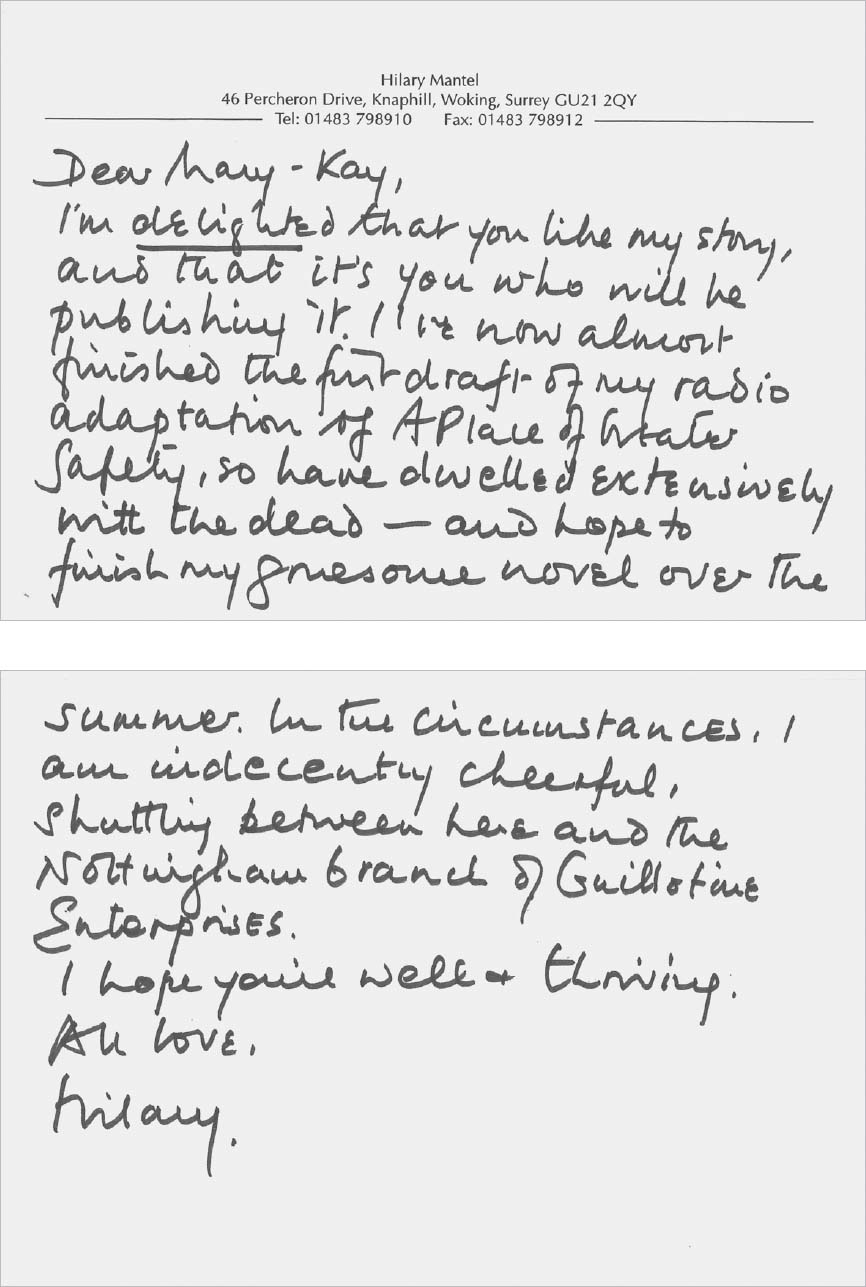
Blame it on the Belgians
On Christopher Marlowe
1992
‘YOU DON’T WANT to see him,’ said the porter at Corpus, when Charles Nicholl went to Cambridge to look at the portrait that is probably Christopher Marlowe.[1] ‘He died in a tavern brawl.’
Nicholl viewed the putative Marlowe, in his opulent slashed doublet, and wondered how he could afford the outfit. He looked at his buttery bills too, and noted when the shoemaker’s son had money to spend; noted when (unless he was starving himself) he was absent from college. His conclusion? There was no tavern. There was no brawl. It is an old lie that Nicholl has set out to nail, but he is unable, he admits, to substitute a new truth. All he can hope for is a ‘faint preserved outline where the truth once lay’. In Elizabeth’s England, men lied to their reflection; and Marlowe belonged to a shadow world of espionage, where every straight action is mirrored by treachery, where the agent provocateur is king.
Charles Nicholl has previously written on alchemy in the Elizabethan age. ‘As above, so below’: this was the maxim of alchemists. It works in the real world too. The factious giants of Elizabeth’s court are supported by a vast root system of con-men, of prison informers, of spies, ‘projectors’ and ‘ambodexters’. Marlowe was part of this underground world: this is not in contention. But his reputation is surrounded by rumour, misinformation, disinformation. Shady and unpleasant he may have been, Nicholl says, but we owe him something – not simply because he was a great dramatist and poet, but because his death was murder, and the crime is unsolved. Nicholl is an investigator with a compelling sense of duty to the past and the people who inhabit it. To accept an untruth, to assent to a lazy version of history, is not just negligent but immoral.
Charles Nicholl writes vividly, without the academic’s compulsion to cover his back; but where he is speculating he says so clearly. Part of the success of his book comes from the fact that he has focused sharply on his central incident. He begins with an account of Marlowe’s death; he leads us away from it, into the thickets of European politics and the literary and political underworld; then he leads us back, by ways digressive but sure, to the Widow Bull’s victualling house in Deptford, where in spring 1593 four young men spent a day drinking wine in the garden.
Mrs Bull’s house was not a tavern, nor was she a sort of Mistress Quickly, half-expecting a fight to break out as the sun declined. She was a bailiff’s widow, with some court connections; her house was a respectable one. Nicholl evokes the Deptford evening: the scent of apple orchards mingling with the reek of fish and sewage. At about six o’clock, the young gentlemen came in for their bespoke supper. A short while later, Ingram Frizer put the point of his dagger into Christopher Marlowe’s right eye socket. He inserted it to a depth of two inches. Marlowe died quickly, with no great fuss.
The inquest produced a tidy, emollient version, which the coroner accepted. It had been self-defence, said the two witnesses, whose names were Skeres and Poley. Marlowe and Frizer had quarrelled over the bill, or reckoning. Marlowe had picked up Frizer’s dagger and slashed at him, Frizer had wrested it away (presumably while the witnesses stood as if turned to stone) and had inflicted the fatal wound. No other version was available to the court; these were the only witnesses, and their account could not be contradicted. Four weeks after Marlowe’s death, Frizer was pardoned. One of the rumours that went about town was that there had been a quarrel over a boyfriend. Nicholl is quite certain that whether or not Marlowe was a homosexual, it had no bearing on his death, and we cannot know what bearing it had on his life: ‘We do not know what it meant to be gay in Elizabethan England.’ As for the row about the bill, it is plausible enough, as an explanation, until you know there was a greater account to be settled. At the time of his death, Marlowe was under investigation by the Privy Council, suspected of being part of a plot to incite the citizens of London against the immigrant Dutch merchants. His friend Kyd had already been arrested and tortured, and the fact that Marlowe was not in jail suggested that some powerful interest was protecting him. It was not the first time he had been in trouble with the authorities. In Cambridge in 1587, his college had taken fright at a report that Marlowe was planning to skip the country and join the ranks of the would-be Catholic martyrs, the seminarians at the English College in Rheims. The Privy Council had taken the unusual step of intervening on his behalf: young Marlowe was a good boy, he should be given his degree. Then in the late January of 1592, he had got into a more spectacular kind of trouble: he was deported from the Dutch town of Flushing, accused of coining. In London he was interviewed by Burghley, the lord treasurer; though coining was a capital offence, he cannot have served more than a short term of imprisonment: in May that year he was on the streets again, brawling in Shoreditch and attracting the attention of the constabulary.
Leave aside for a moment all speculation and suggestion. Just these two (well-documented) incidents seem to show that we are dealing in a business of spectacular complexity. They went back a long way, Marlowe and Frizer and Skeres and Poley, much further back than the ‘feast’ at Mrs Bull’s. In As You Like It Shakespeare made a reference to Marlowe’s death, cryptic but pointed: he called it ‘a great reckoning in a little room’.
What sort of man was Marlowe? Nicholl is not primarily writing a work of literary criticism, but he presents us with a picture of an author who is congruent with what he writes. Marlowe is flamboyant, sceptical, a vivid schemer, with plenty of ‘stomach’ – that is, he is ambitious, impulsive, noisy, prone to violence. Not the best sort of recruit for the secret services, by modern standards – but patient undercover work was not his forte. Nashe wrote:
His pen was sharp-pointed like a poignard. No leaf he wrote on but was like a burning-glass to set on fire all his readers … He was no timorous servile flatterer of the commonwealth wherein he lived. His tongue and his invention were foreborn: what they thought they would confidently utter. Princes he spared not, that in the least point transgressed.
At some level, however, he must have been in the service of princes; everyone was. Poetry wasn’t a living. So, in 1587, Nicholl tells us, he was acting as a recruiter for the Catholic seminary at Rheims, working on the young men within his university, and reporting back to some important Protestant about what success he had. Some recruits were from crypto-Catholic families; some were just romantic boys with a relish for danger and for being on the wrong side of the establishment. Christopher Marlowe was – no doubt – not intrinsically evil or depraved; probably he was not particularly anti-papist, and perhaps indeed he had flirted with Rome himself. His own beliefs are unknowable, but at an early age, it seems, he found work he could do, the kind of work that keeps you in doublets you can wear to have your portrait painted. He was the kind of man whose rashness, in speech and action, might provoke an answering rashness in others. He was articulate, where others fumbled for words. He was ingenious, where others struggled to find the mechanism of a plot. The weak, the wavering, the disaffected would be drawn to a man like Marlowe.
In the Europe of the late 16th century, Nicholl shows, ‘intelligence’ was a massive industry. Of course it was different from the modern idea of intelligence, because ink and paper and the spoken word were the only means of communication, and news could travel only as fast as a courier. Every government department needed its sources of information, and so did every great man; networks of couriers and foreign correspondents were maintained. And when it came to understanding what your opponents were up to, you could not tap their telephones or monitor their radio communications: your only course was to insert some man of yours among their men. Thus, the two-faced man flourished – and at state expense, since Francis Walsingham had set up in England the world’s first professional secret service.




